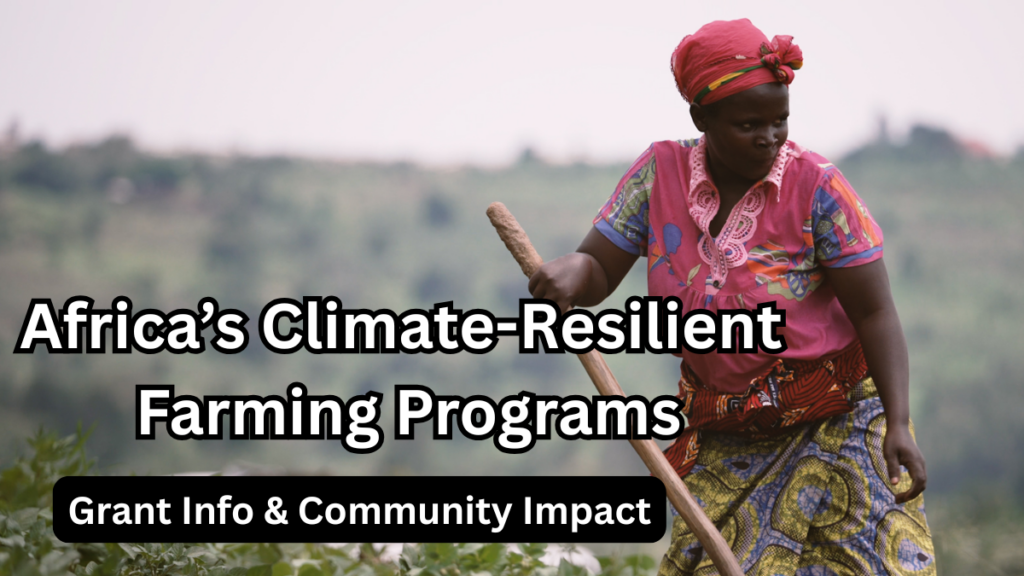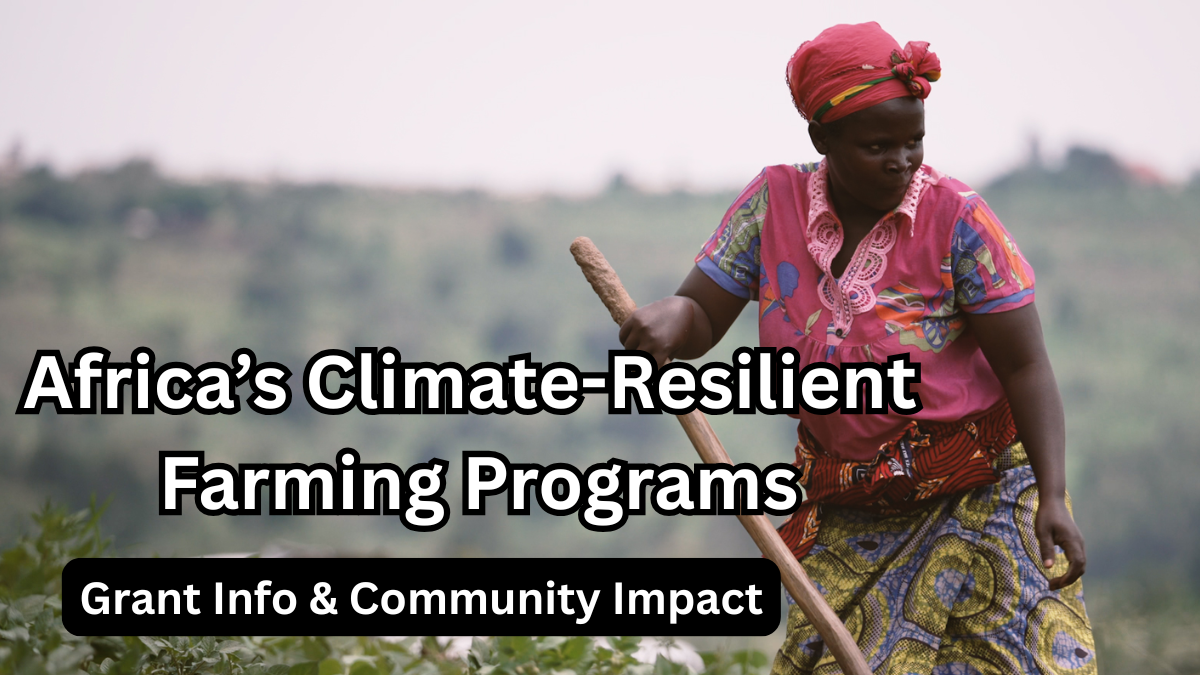As climate change continues to challenge traditional farming practices across Africa, Climate Resilience Farming Schemes 2025 are stepping up as a lifeline for vulnerable communities. These initiatives are not only helping farmers survive erratic weather but also thrive through modern tools, funding, and community-driven solutions.
Let’s take a closer look at the programs, grants available, and the real-life impact these schemes are having in rural Africa.

Why Climate-Resilient Farming Is a Game-Changer
Farming in Africa is heavily dependent on rain and stable seasons—but with floods, droughts, and temperature swings becoming more common, survival itself has become a challenge for smallholder farmers.
That’s where agriculture adaptation programs come into play.
These programs focus on:
-
Encouraging drought-resistant crops
-
Training farmers on climate-smart techniques
-
Providing micro-irrigation systems and rainwater harvesting tools
-
Offering access to mobile-based weather forecasting
-
Enabling community seed banks and agroforestry
Quick Look: Key Grant Features
Here’s a snapshot of what Climate Resilience Farming Schemes 2025 are offering to farmers:
| Grant Feature | Details |
|---|---|
| Funding Range | $500 to $5,000 per smallholder household |
| Eligibility | Low-income farmers, women-led farms, youth cooperatives |
| Support Provided | Tools, training, seeds, drip irrigation kits, early-warning weather systems |
| Duration | 6 months to 2 years, depending on the crop cycle |
| Target Regions | East Africa, Sahel, Southern Africa |
| Focus Areas | Soil regeneration, water efficiency, crop diversification |
How Communities Are Benefiting
These agriculture adaptation programs are more than just grants—they’re changing lives.
Real-world benefits include:
-
Boosted Crop Yields: Farmers in Kenya and Ethiopia have reported a 25–40% increase in yields after using drip irrigation and drought-tolerant seeds
-
Women Empowerment: Over 60% of recent grantees in Uganda were women-led farms
-
Youth Engagement: In Nigeria and Ghana, climate-smart training hubs are attracting youth back to farming with modern techniques and entrepreneurial models
-
Resilience Building: Farmers are now better prepared to handle floods or dry spells thanks to digital weather alerts and insurance tie-ins
Regional Highlights
Kenya
-
Over 10,000 farmers in arid counties are now part of a Climate Resilience Farming Scheme 2025 pilot project
-
Introduction of solar-powered water pumps is improving water access for irrigation
Ghana
-
Local cooperatives have introduced millet and cassava varieties that mature faster and tolerate heat
South Africa
-
Soil health projects are converting degraded land into fertile farms through regenerative techniques
Integration With Government & NGOs
Collaboration has been key to the success of these programs.
-
Governments are offering tax reliefs and fast-tracked approvals for green farming projects
-
NGOs and international donors are providing funding and technical guidance
-
Local agri-tech startups are supplying innovative tools such as moisture sensors and AI-based crop monitoring
These partnerships ensure that Climate Resilience Farming Schemes 2025 are both scalable and sustainable.
What’s Next?
With Africa’s population projected to double by 2050, the urgency to build a resilient food system cannot be overstated. Scaling up agriculture adaptation programs will be crucial in ensuring food security, economic stability, and environmental health.
New pilot programs in 2025 aim to:
-
Expand training to 1 million farmers
-
Digitally link all grant recipients for shared learning
-
Introduce climate-risk insurance bundled with farming inputs
FAQs
Q1. Who can apply for these farming grants?
Anyone involved in small-scale farming, especially women, youth, and marginalized communities in vulnerable regions, can apply under Climate Resilience Farming Schemes 2025.
Q2. Are these programs government-funded or donor-funded?
Most programs are co-funded by national governments, international organizations like FAO, and NGOs involved in climate and agricultural development.
Q3. What kinds of crops are supported under these schemes?
Focus is on climate-smart crops such as millet, sorghum, drought-resistant maize, cassava, and legumes.
Q4. How do I find out if my region is included?
Local agriculture departments or community farming cooperatives often list eligible areas. Some NGO websites also offer grant maps and contact info.
Final Thoughts
The Climate Resilience Farming Schemes 2025 are more than policy interventions—they’re hope in action. By blending technology, tradition, and tailored funding, these agriculture adaptation programs are helping African farmers reimagine the future of farming, one resilient harvest at a time.
Click here to learn more
Sachin is a dedicated writer specializing in education, career, and recruitment topics, delivering clear and actionable insights to empower readers.
